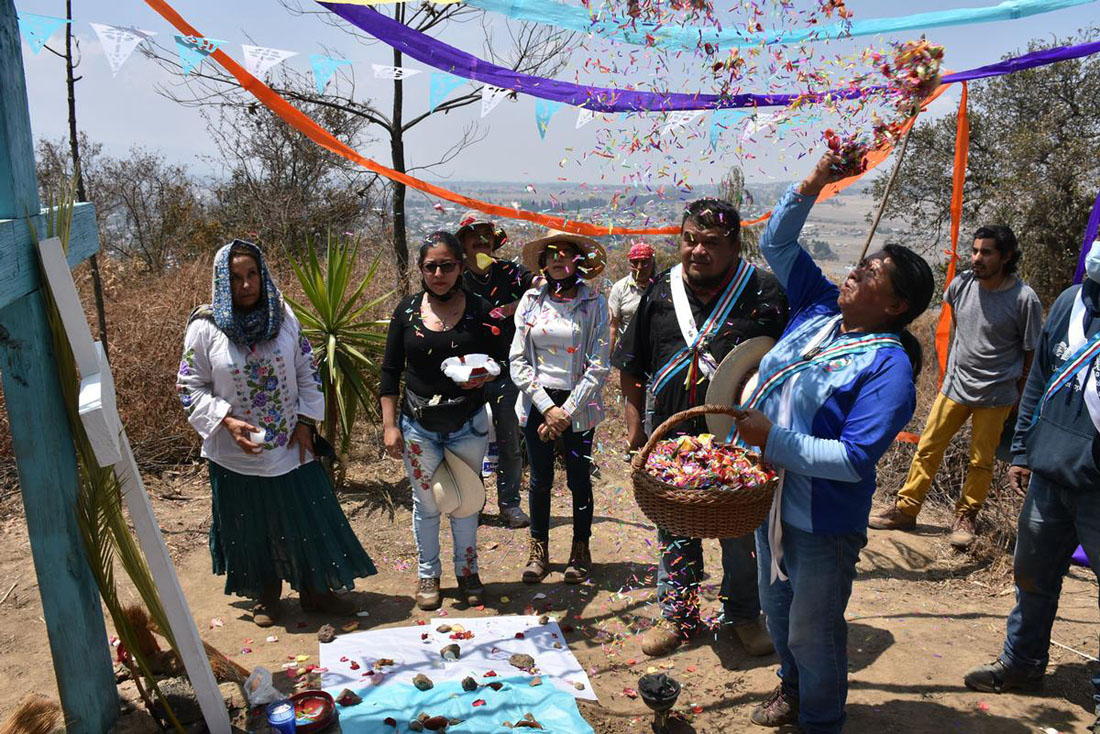
by Joseph Sorrentino, photos and text
Graniceros are Mexican shamans who, through ancient rituals and ceremonies, attempt to control the weather. They are also curanderos, traditional healers.
Their name comes from granizo, the Spanish word for hail. They are believed to have the power to stop hail, which would destroy crops.
Their rituals and ceremonies occur at different times during the agricultural cycle. February marks the beginning of the agricultural cycle. The petition for rain is performed in May to ask Tlaloc, the Mexica god of rain, for abundant rain. The Canicula is done in August, during the so-called Dog Days, to ask the gods for less heat and rain. The Agradecimiento is a November ritual to give thanks to Tlaloc and other gods for the rains and for the good harvest.
At each event, graniceros and participants bring offerings that the gods have asked for. The gods send their requests to the graniceros through dreams.
These photos are from four ceremonies that took place over the course of a year in Amecameca in the State of Mexico. The first marks the beginning of the agricultural cycle (February); next is the petition for rain (May); the Canicula (July); and the final one, to give thanks to the gods for the rain and harvest (November).
***
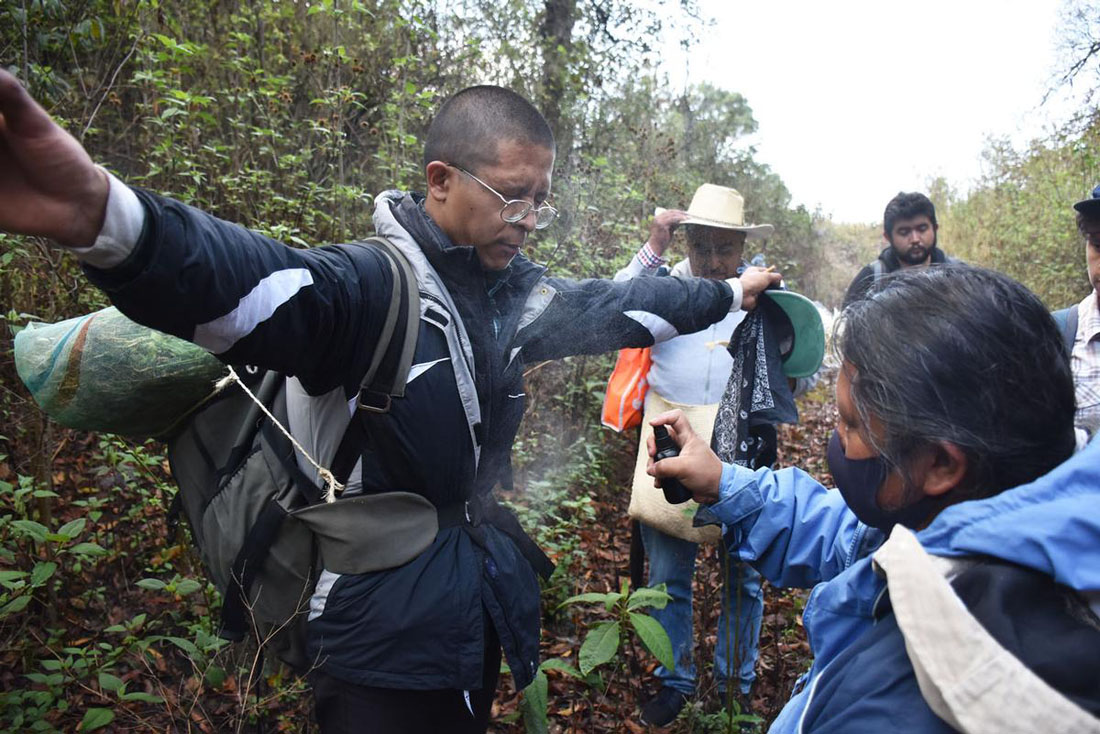
Protection
Two things happen before arriving at the location for any ritual or ceremony held by
graniceros: first, permission is asked to enter what is considered to be a sacred space and here, each participant is sprayed with a solution designed to protect them from evil spirits. Spirits are called
aires.
***
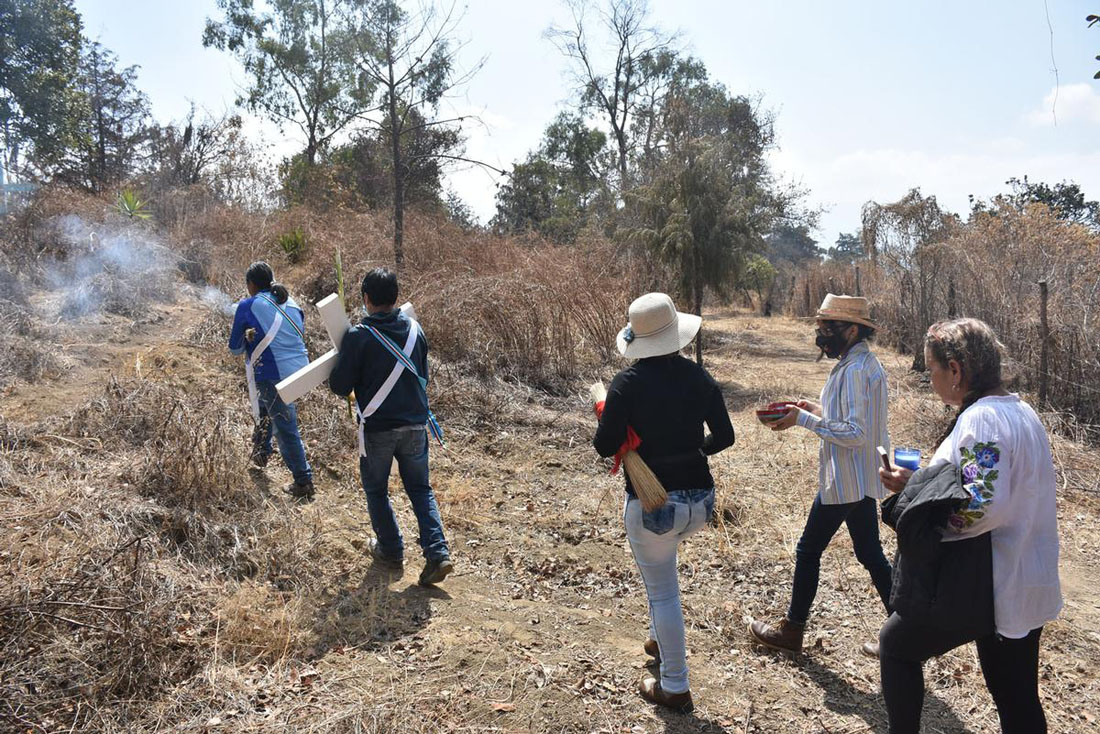
Procession
Graniceros lead the group to the top of a small hill where the rain petition will be held.
***
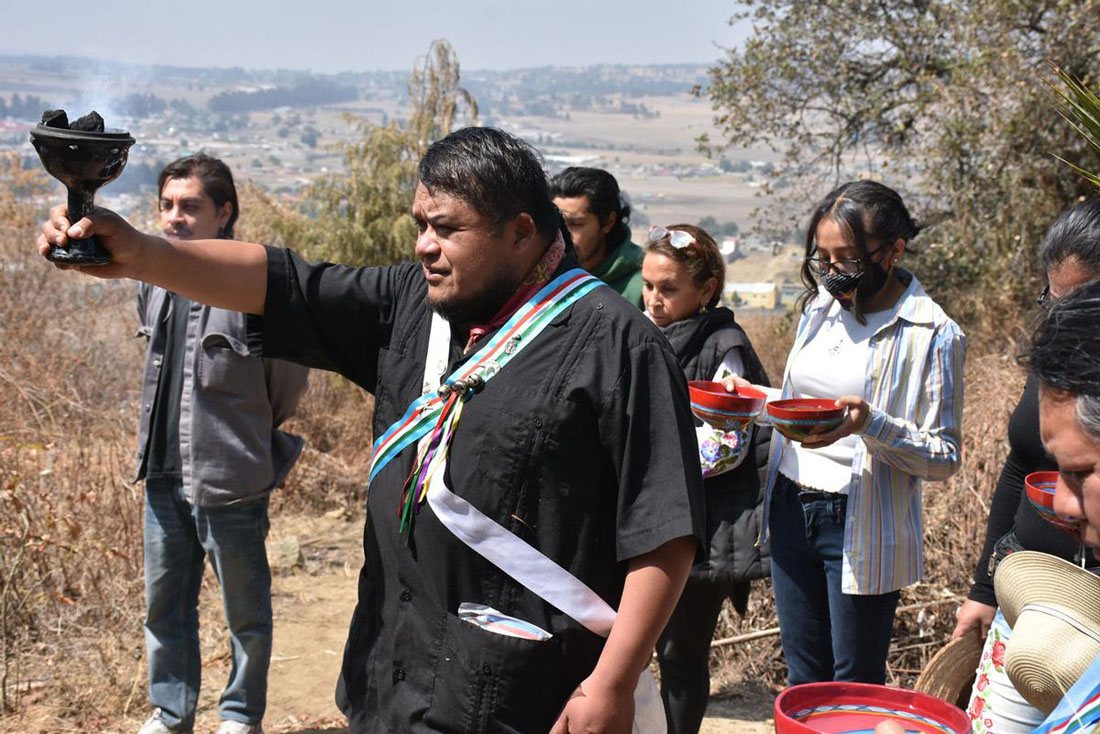
Asking Permission
A
granicero asks permission from the gods to perform the rain petition. Permission is asked before every ritual and ceremony.
***
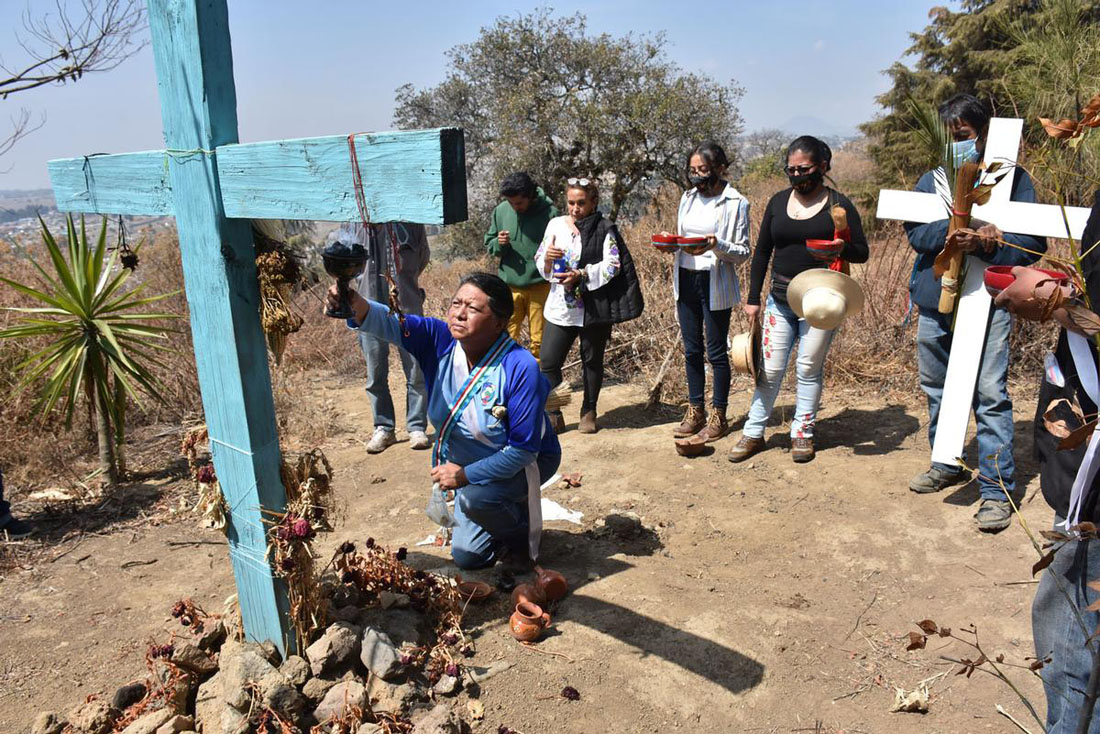
Cleansing
A
granicera kneels before a cross with an incense pot that will be used to cleanse the cross and the area below it.
***
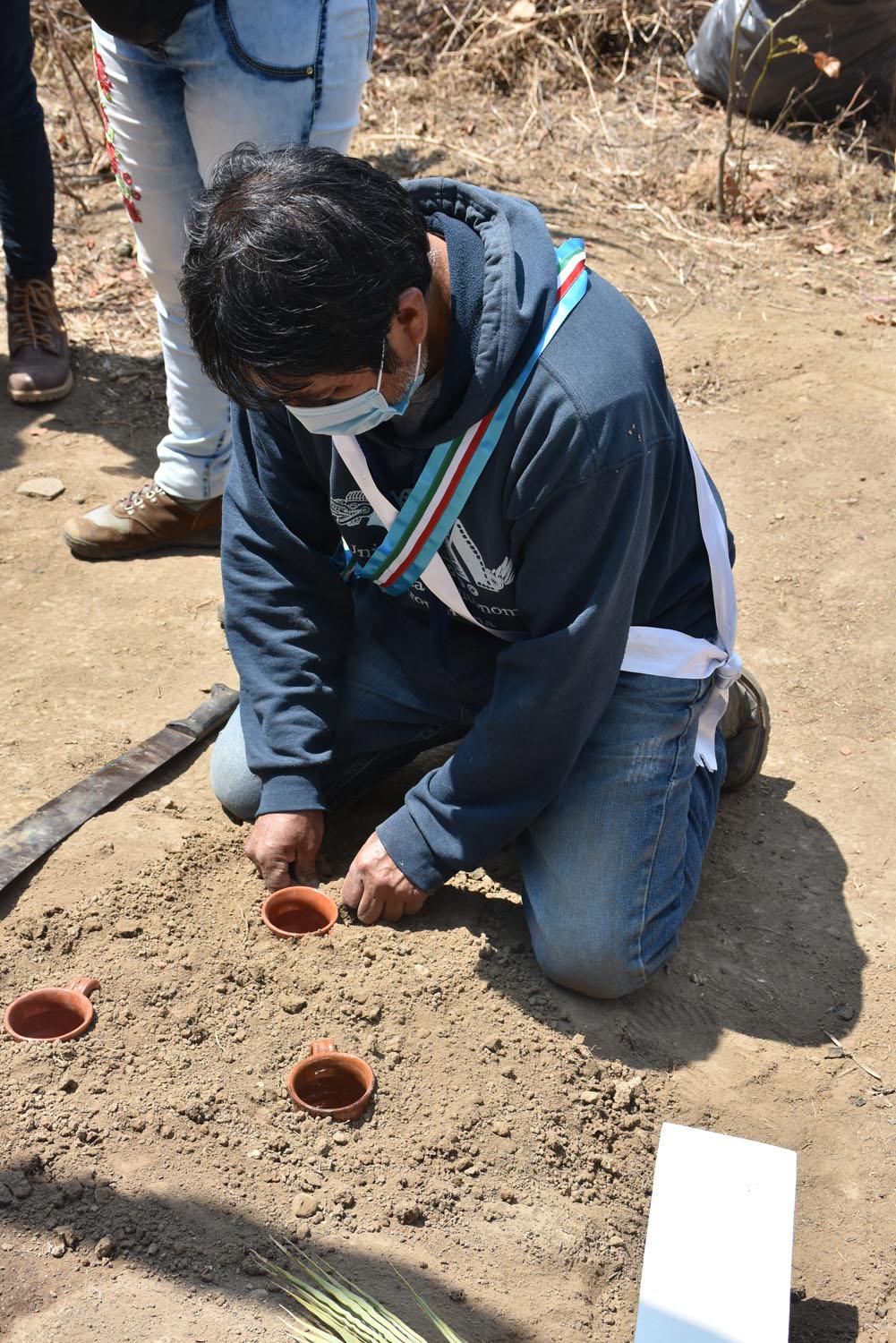
Buried Cups
Cups are buried and will be filled with water, symbolizing the water that's collected underground.
***

Rain
Colored confetti is tossed in the air to mimic raindrops falling.
***
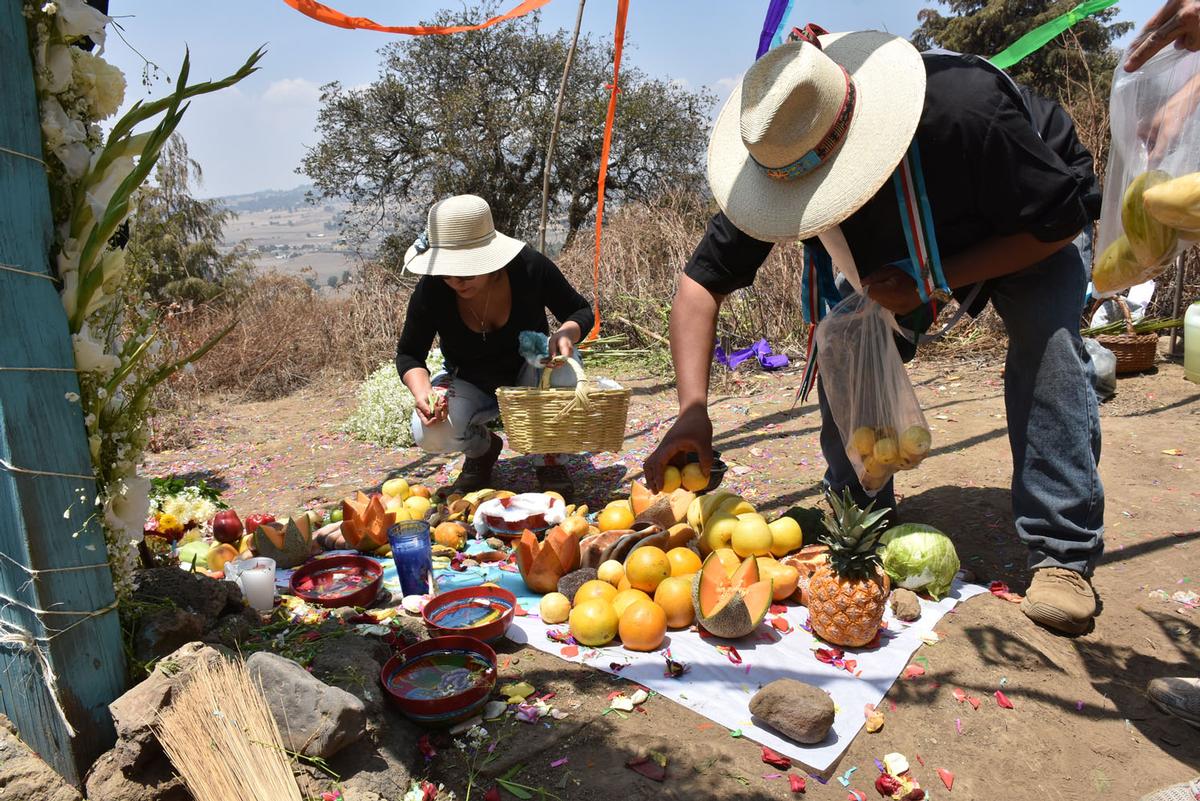
The
Ofrenda
Dreams about when and where to hold a ritual and what to bring for the
ofrenda (offering) are sent to
graniceros by the gods. Here,
graniceros place the offerings at the foot of the cross.
***
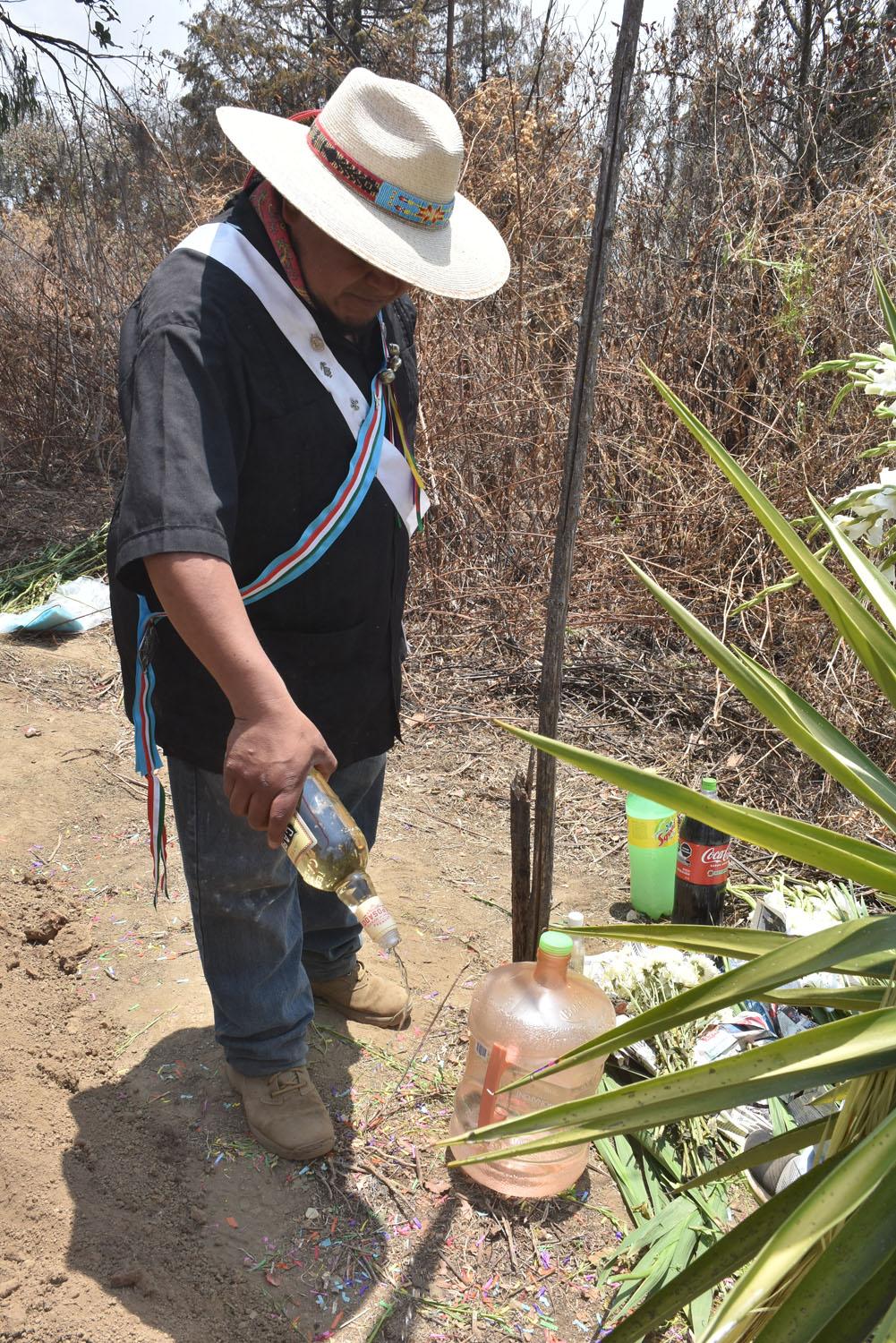
Tequila Offering
A small amount of tequila, and other liquids, are poured around the cross. These are offerings to the gods.
***
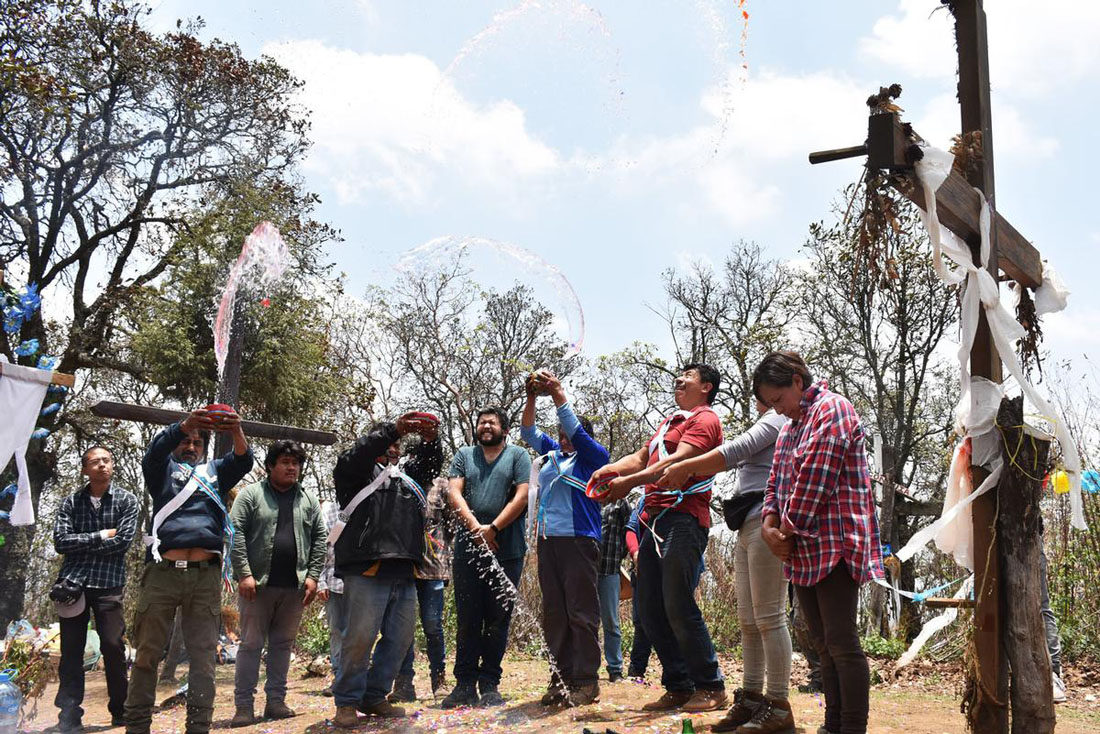
Tossing Water
Graniceros toss water into the air to mimic raindrops.
***
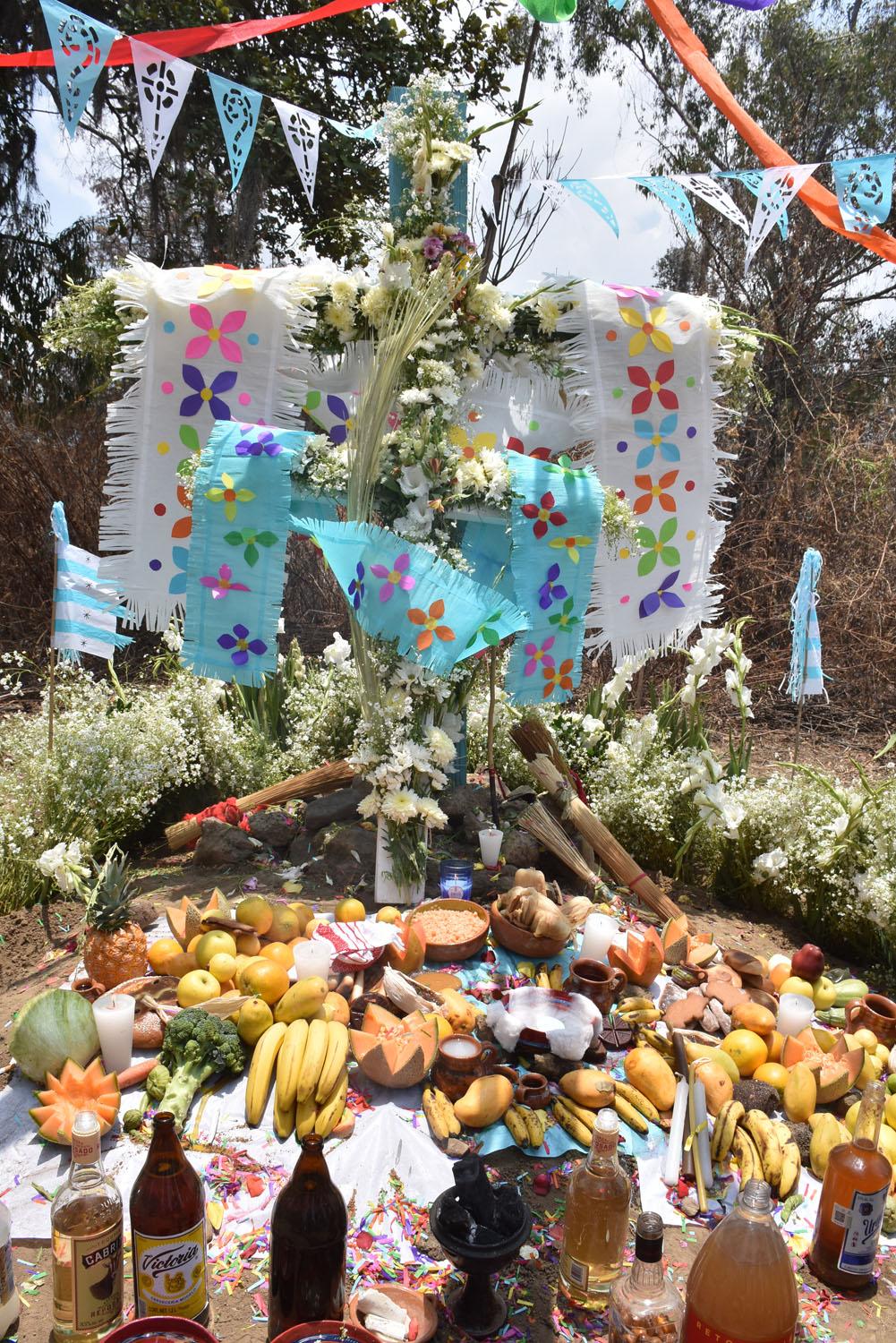
Cross and
Ofrenda
***
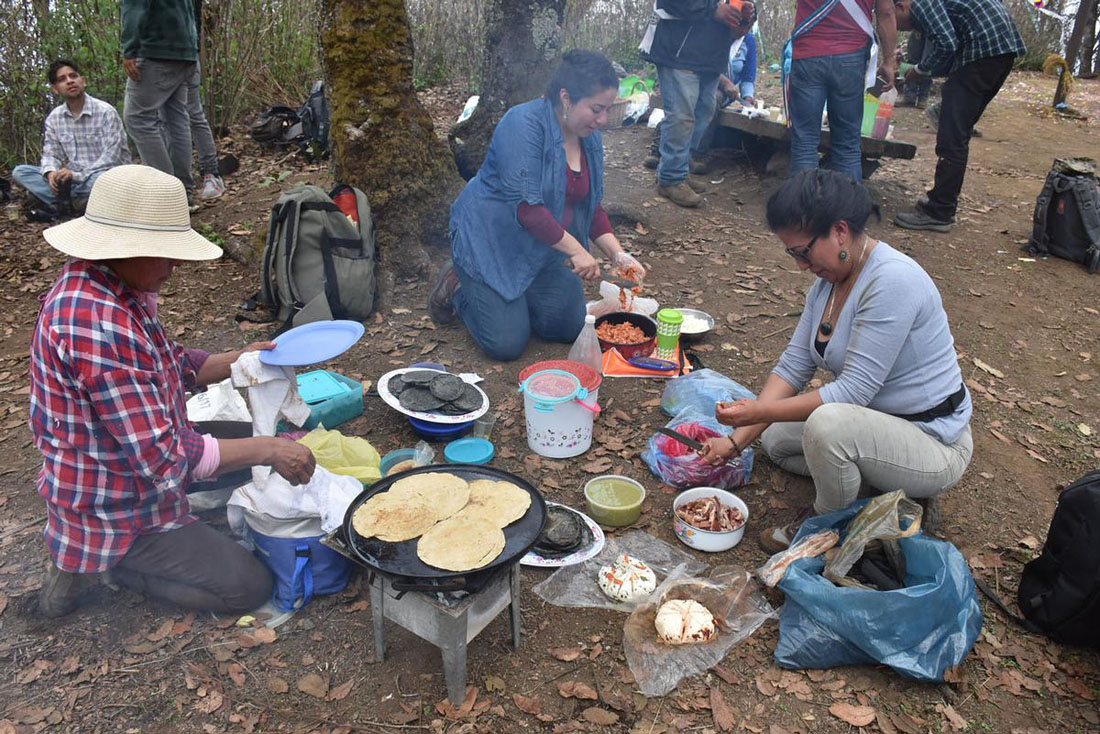
Cooking
Food is being prepared, both for the
ofrenda and for the participants. Once the food is place in the
ofrenda, all participants must leave the area so that the
aires can partake of the food. The participants will eat in a different location.
***
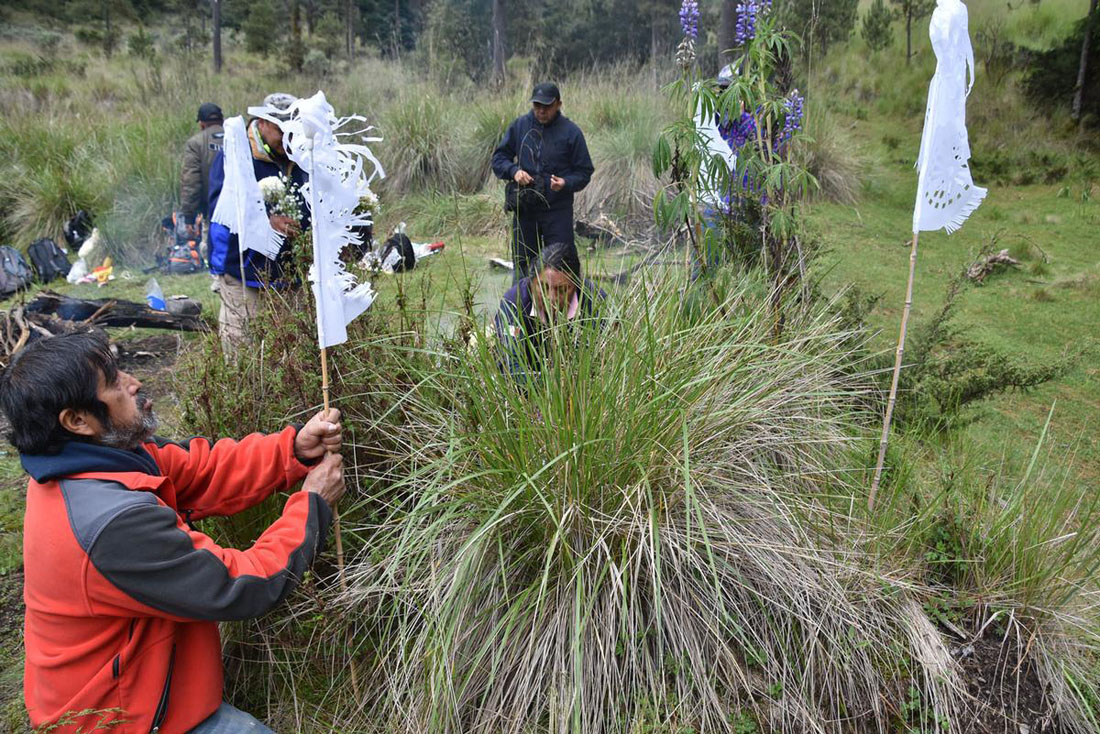 Canicula
Canicula: Placing the Flags
White flags representing the four cardinal directions (north, east, south and west) and the four essential elements (water, air, fire and land).
***

Snow
White confetti, symbolizing snow, is spread on the
ofrenda. Both Popocatépetl, the active volcano, and Iztaccihuatl, the extinct volcano, are often topped with snow.
***
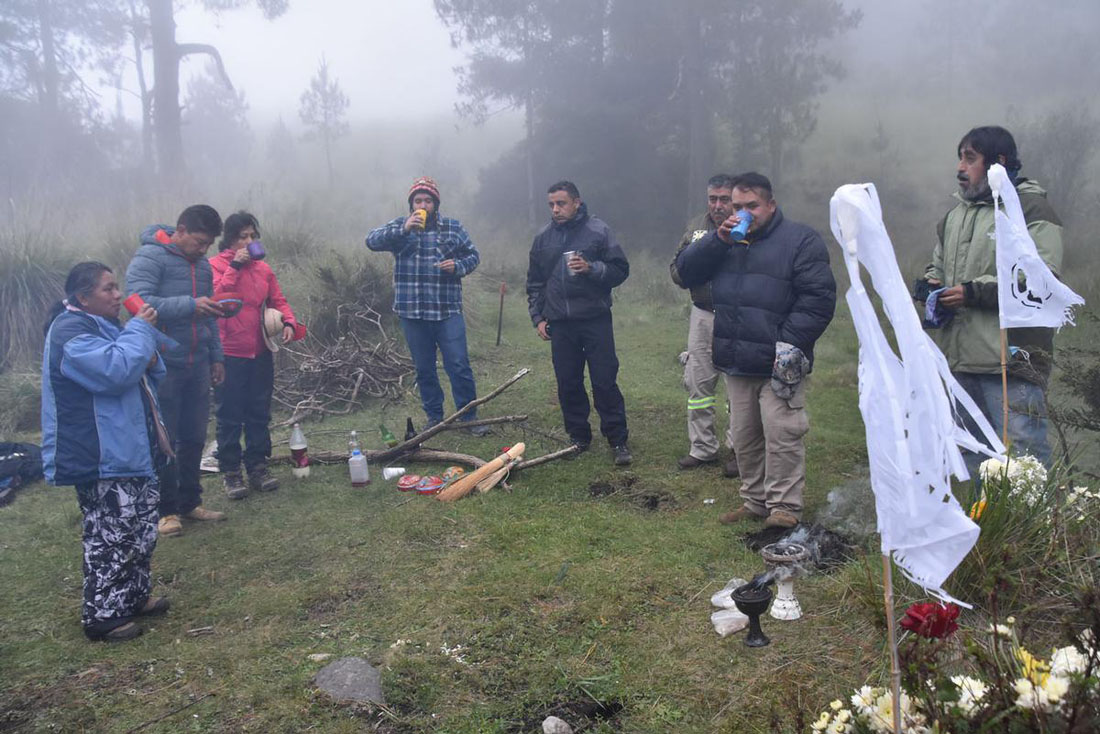 Conviviencia
Conviviencia
Once the
aires and participants have eaten—in different areas—participants return to where the
ofrenda is to share food and time with the spirits.
***
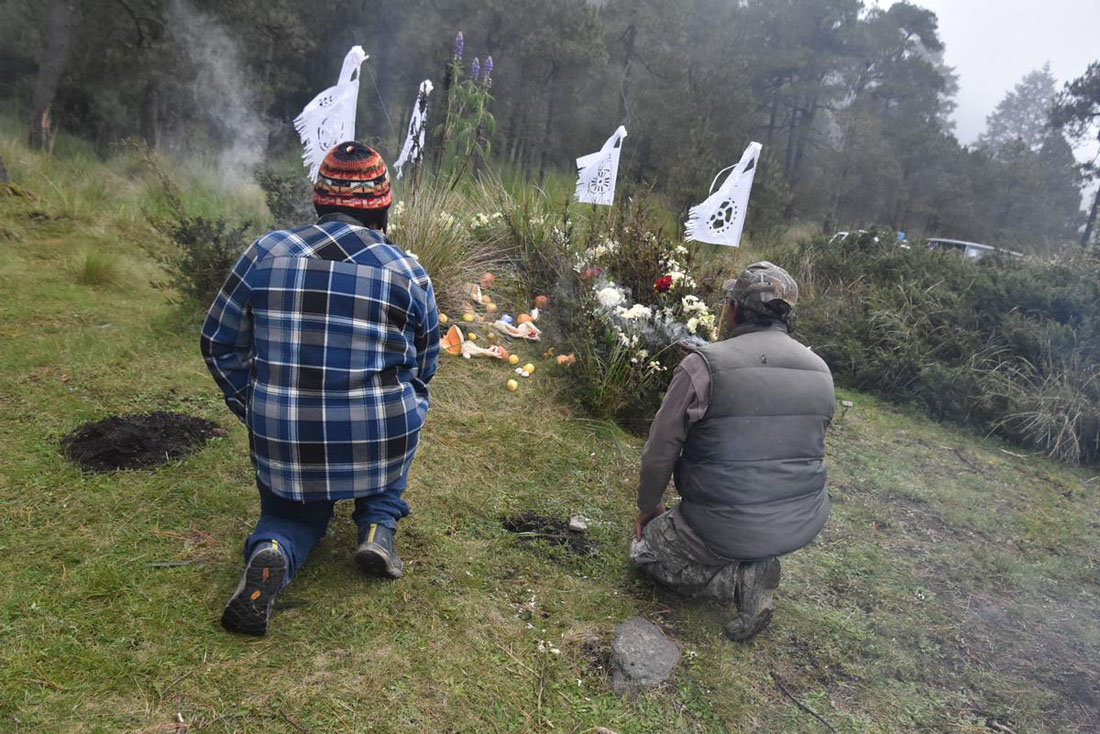
Closing Ceremony
Each participant, holding an incense pot, kneels before the
ofrenda during the closing ceremony.
***
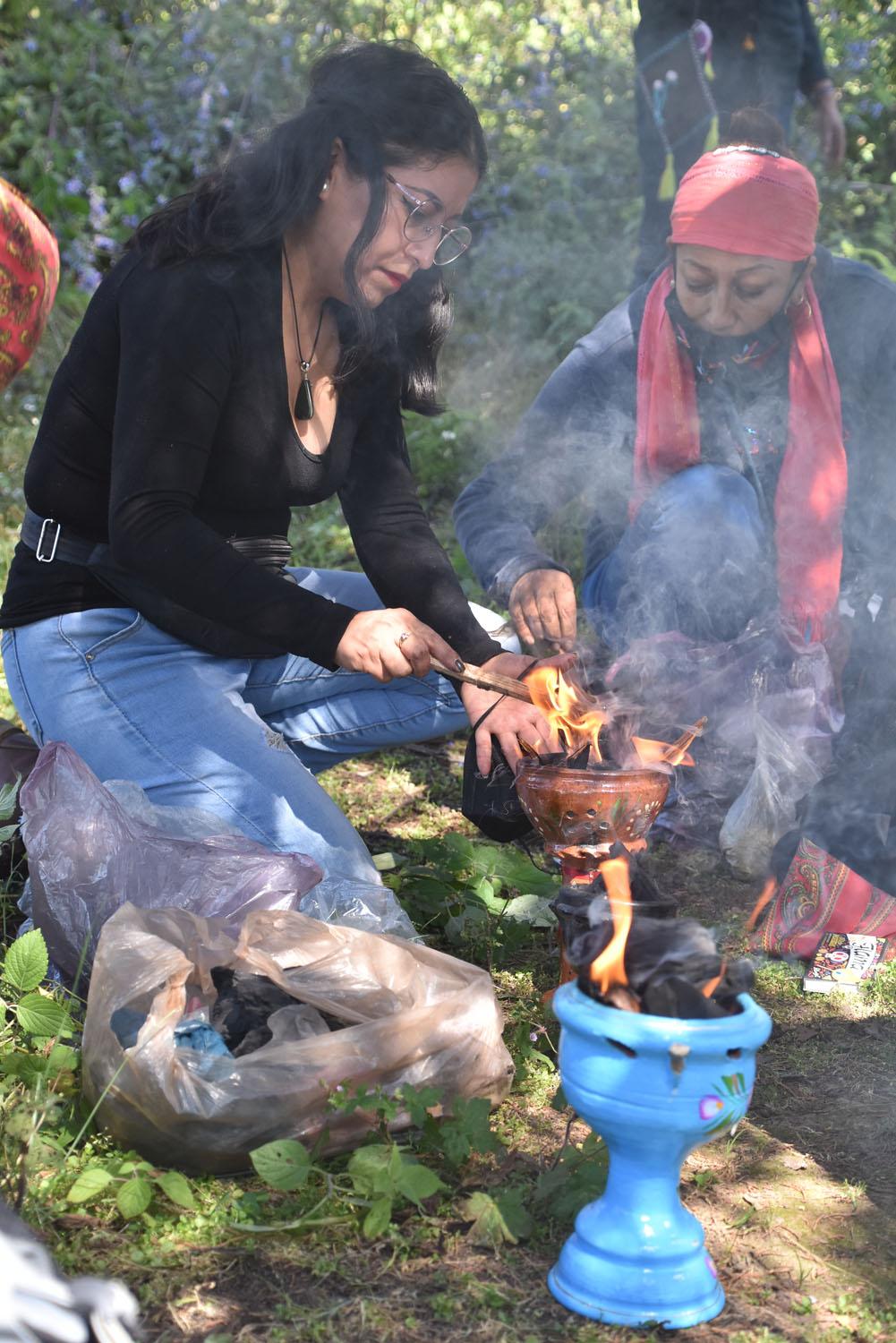 Agradecimiento
Agradecimiento
Incense is lighted in pots before the
Agradecimiento ritual starts. This ritual occurs in November, to give thanks for the rain and the harvest.
***
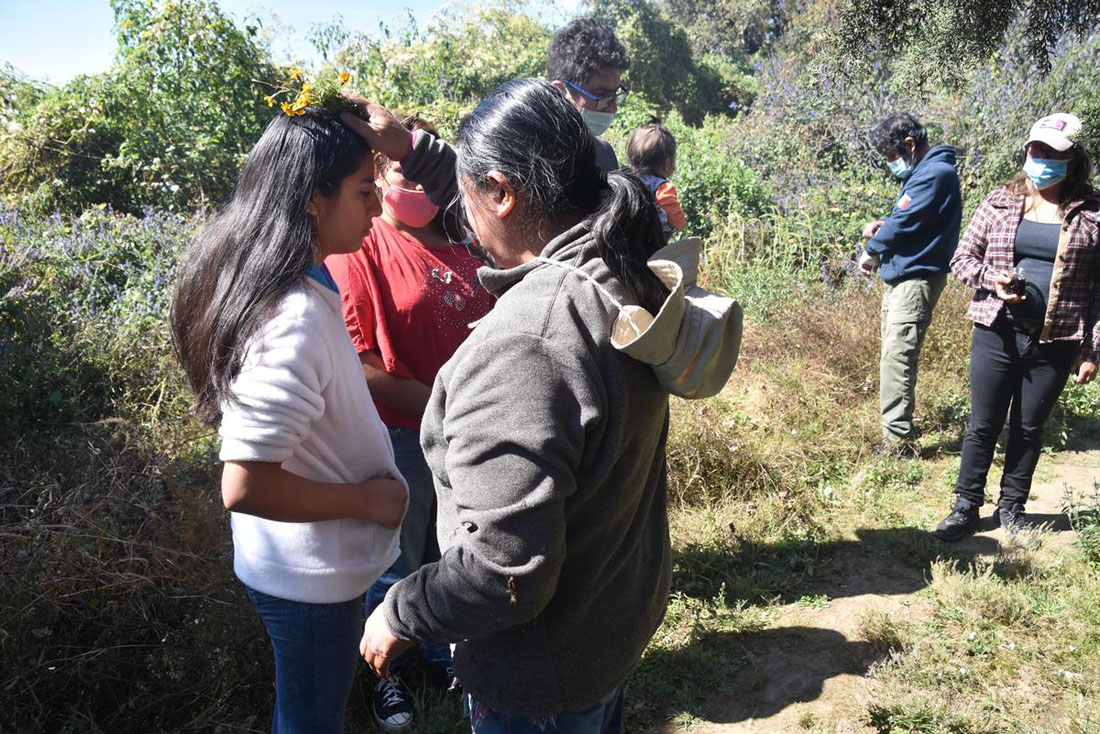
Protection
The flowers are used to protect this young girl from evil
aires.
***

The
Ofrenda
A table made of thin wooden branches is used to place the offerings in front of the cross during the
Agradecimiento.
***

Strings
Colored strings which radiated out from a stick set in the middle of the
ofrenda are gathered up. The strings represent the water that has gone out and they are now being collected, symbolizing the water being collected underground.
***

Final Cleansing
At the close of the
Agradecimiento, each participant is cleansed with incense. This purifies the person and removes any
aires that may have attached themselves to them.
**************

Joseph Sorrentino is a photographer, journalist and playwright. His photographs and articles have appeared in numerous newspapers and magazines in the US and Mexico, including the Philadelphia Inquirer, Mexico News Daily, In These Times, Commonweal Magazine, and La Jornada del Campo. His plays have been produced in theaters across the US and in several European countries. He currently lives in Chipilo in the State of Puebla, Mexico.
www.sorrentinophotography.com
**************
*****
 Visit SMA's Social Network
Visit SMA's Social Network
